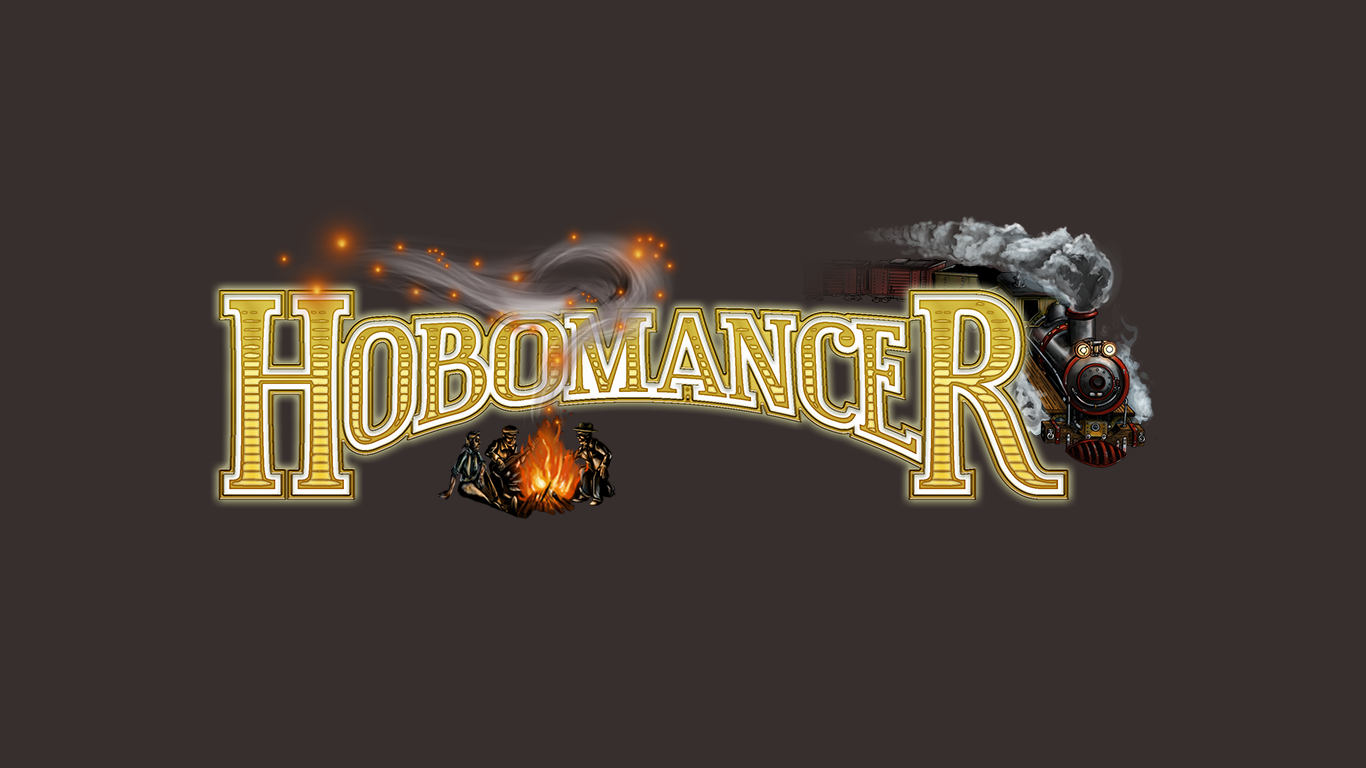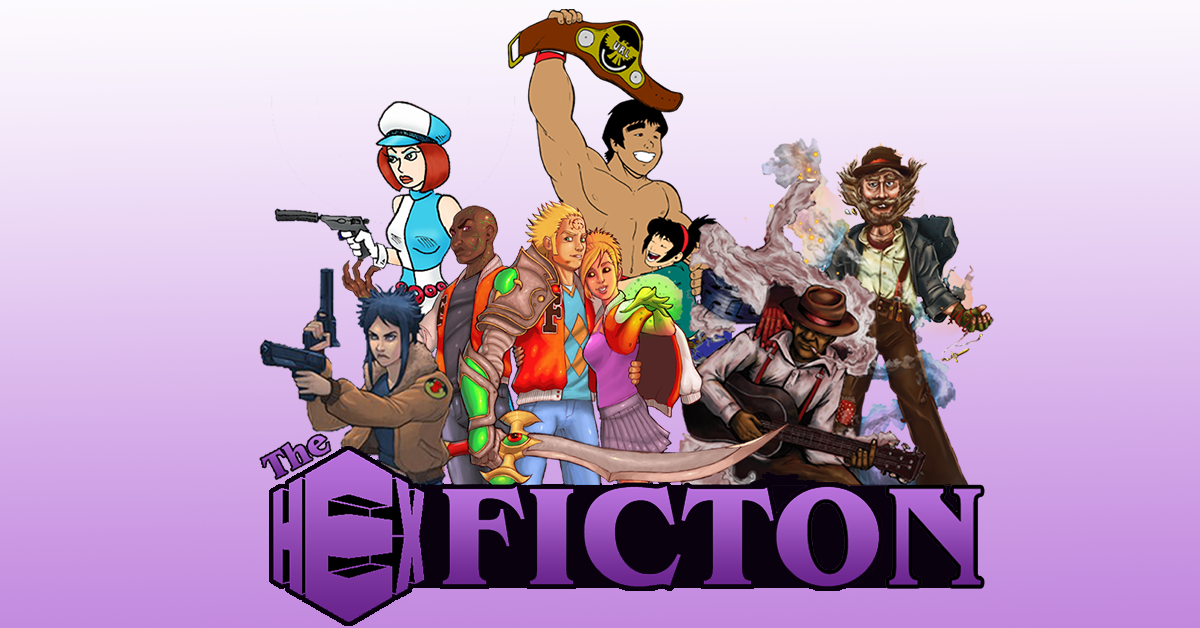We may earn money or products from the companies mentioned in this post.
Conducted by Leighton Connor
Carter Newton is not only a co-creator of the award-winning RPG Hobomancer but also the author of Suicide’s Run: A Tale of the Hobomancers. Suicide’s Run is the first novel Hex Games has published, and it is on sale now.
I was Carter’s editor on Suicide’s Run, but, more importantly, I’m a big fan of the book. When I sat down to interview Carter we had plenty to talk about. I’ve split the interview up into three parts. In Part One, we talk about the inspiration for the novel, going beyond the character sheets, malefactors of great wealth, and more.
 Leighton Connor: Hex has released supplements for games before, but this is the first time we’ve published a novel based on one of our games. Carter, what was it that inspired you to write a novel about hobomancers?
Leighton Connor: Hex has released supplements for games before, but this is the first time we’ve published a novel based on one of our games. Carter, what was it that inspired you to write a novel about hobomancers?
Carter Newton: The setting for Hobomancer is so rich, and so big, it just seemed to call out for a deeper exploration. I picked this one particular corner, but there are so many corners! I mean, I started this novel in November of 2012, which predates the publication of Hobomancer, because at some point in writing the RPG I realized that there was just so much I wanted to do with this world that wouldn’t fit in the core book. I’ve been between regular gaming groups since about 2010. I didn’t have anyone to play with to explore this world with me. We talk about RPGs being shared storytelling; being alone I had no option but to do it myself!
Having said that, I still got a little of that shared storytelling element. So many things have been done with Hobomancer since then that were inspiring. Best example of that is the Rail Dragon. Steve created that creature in response to a challenge on Reddit to reinvent dragons. I read the post and emailed Steve, “Yeah, I’m going to need to use that, if it’s okay by you.”
Also, I was hoping to cash in on some of that sweet Dragonlance ™ money. I have since been informed by experts in the publishing industry that perhaps I should revel in the joy of my art.
LC: What you say about “so many corners” is a good point. When I read the book, I was impressed that it definitely felt like a Hobomancer story–the setting, tone, and types of characters are all straight out of the game–and yet it was completely different from what I expected in a Hobomancer novel. You managed to find that balance between bringing the game to life and, at the same time, telling your own story. Did you have any problems with that? Were you ever concerned that you weren’t sticking close enough to the game or, like some of those Dragonlance novels you mentioned, you were too close to the source material?
CN: Particularly early on, I had terrible problems with that, particularly with the characters. I don’t want to get boring with a bunch of process stuff, but I started by writing the first couple of thousand words, and then went back and made character sheets for the characters. I looked at them last week and laughed at how far some of the characters had diverged – or evolved, maybe – from their original concepts. But yeah, there were a couple of moments that were really frustrating where I found myself torn between what was on the character sheet and what the story needed. Then I had this breakthrough: “Just write the story. Think of the stuff that doesn’t fit the rulebook as ‘house rules.’” That was a tremendous help. Suddenly I felt free to go beyond the character sheets I’d drawn up. Which explains the gap between the 2012 character sheets and the 2015 novel.
But it caused some challenges, yeah. The editors were both like, “I don’t understand this one character’s power. He sounds like a Train Whisperer, but then he does all this crazy stuff with dreams, and I don’t get it.” And I sort of had to say, “Wow, you’re really right. It works in the confines of the story, though, and we won’t include a character sheet for him in the appendix, and if anyone asks, we can say that’s for a future supplement.”
Fortunately Hobomancer is a really good setting with rules that are built for fiction.
LC: Let’s talk about the characters. First, your main character, who goes by the name “Suicide,” is not even a hobomancer. He’s the kind of guy who enjoys a life of luxury and looks down on hobos. Why did you decide you wanted that sort of character as your lead?
CN: Some of it was Creative Writing 101 – what can I do make this character feel the most uncomfortable? Suicide going from being this very cushy, middle-class social climber to surrounded by this cast of characters that he would have considered on his good days to be beneath his notice. On a bad day, he’d probably think of these hobos as vaguely subhuman, and now he’s dropped into a world where not only does his life literally depend on them, but they’re infinitely more powerful than he is. That makes him a character whose entire worldview is broken. That’s a character who can have all kinds of revelations about what society means, and the value of his own work, and can see very immediately the consequences of his behaviors – where previously he was protected by his social status, now he’s seeing the people who lived with those consequences.
Another thing I decided very early was that I didn’t want this to be the story of Suicide learning to be a hobomancer. I was much more interested in telling a story where the main character never got comfortable with the weird stuff going on around him. Let’s be honest, Suicide would rather be at a Rotary Club meeting than off fighting monsters. Even so, we also get to follow along while this character learns to be a – well, maybe not a hero, but at least a stand up guy.
LC: Would I be correct in thinking that Suicide’s characterization also contains an element of social criticism? I mean, call me crazy, but it seemed like you may have some points to make about wealth and power.
CN: So, it wasn’t as subtle as I hoped, huh?
Well, look, here’s the thing… I’d like to be wealthy. Lots of us would like to be wealthy. But I’m from the “Uncle Ben” school of “with great power comes great responsibility.” Suicide starts as Ebenezer Scrooge; he could not care less about his fellow man, unless his fellow man is useful to him in some way. Suicide is basically abusive to anyone beneath him on the social ladder – essentially all power and no responsibility. The time period the story takes place in is the hangover of one of our most notorious gilded ages, and is literally a tale of resisting the kind of men Theodore Roosevelt called “malefactors of great wealth,” men willing to slag anyone and anything in their quest to build larger empires and bigger piles of hoarded wealth. Here we are a generation later, with a different Roosevelt in the White House, and we still have rich men deciding that wealth makes them moral, regardless of who may get hurt. All power, no responsibility.
The lesson Suicide learns through all of his experiences is “we’re all in this together.” Also, maybe, to live by the sweat of his own brow. I don’t want to fetishize manual labor – I’ve done my share, and it’s not awesome. But there is a certain honesty that Suicide has to learn to say, “I achieved this by skill, not by saying I was clever and letting someone else take the heat.”
LC: I’m just thankful we don’t have to deal with those “malefactors of great wealth” in our modern world.
CN: Yeah. Systemic racism, classism, and patriarchy: fully disassembled.
And on that sarcastic note, the first part of our interview draws to a close. Be sure to check back tomorrow for Part 2, in which we talk about research, racism and sexism, Carter’s favorite character, and Wikipedia.



